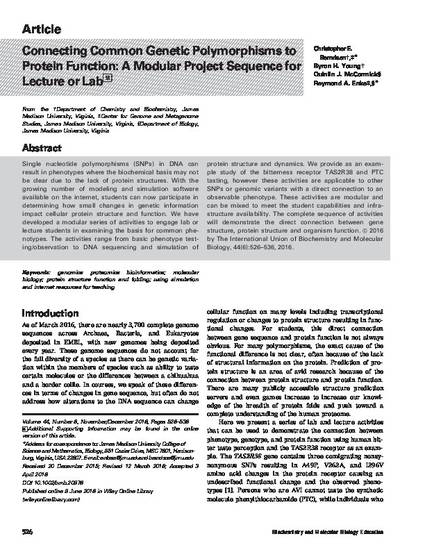
Article
Connecting Common Genetic Polymorphisms to Protein Function: A Modular Project Sequence for Lecture or Lab
Biochemistry and Molecular Biology Education
(2016)
Abstract
Single nucleotide polymorphisms (SNPs) in DNA can
result in phenotypes where the biochemical basis may not
be clear due to the lack of protein structures. With the
growing number of modeling and simulation software
available on the internet, students can now participate in
determining how small changes in genetic information
impact cellular protein structure and function. We have
developed a modular series of activities to engage lab or
lecture students in examining the basis for common phenotypes.
The activities range from basic phenotype testing/
observation to DNA sequencing and simulation of
protein structure and dynamics. We provide as an example
study of the bitterness receptor TAS2R38 and PTC
tasting, however these activities are applicable to other
SNPs or genomic variants with a direct connection to an
observable phenotype. These activities are modular and
can be mixed to meet the student capabilities and infrastructure
availability. The complete sequence of activities
will demonstrate the direct connection between gene
structure, protein structure and organism function. VC 2016
by The International Union of Biochemistry and Molecular
Biology, 44(6):526–536, 2016.
Disciplines
Publication Date
November, 2016
Citation Information
Christopher E Berndsen, Byron H Young, Quinlin J McCormick and Raymond A Enke. "Connecting Common Genetic Polymorphisms to Protein Function: A Modular Project Sequence for Lecture or Lab" Biochemistry and Molecular Biology Education (2016) Available at: http://works.bepress.com/jmu-cgems/3/
